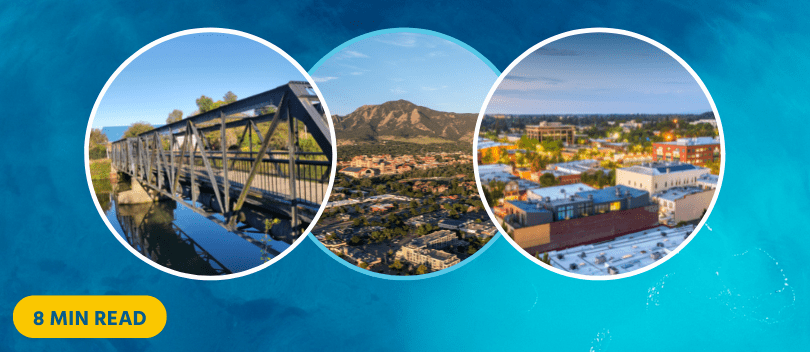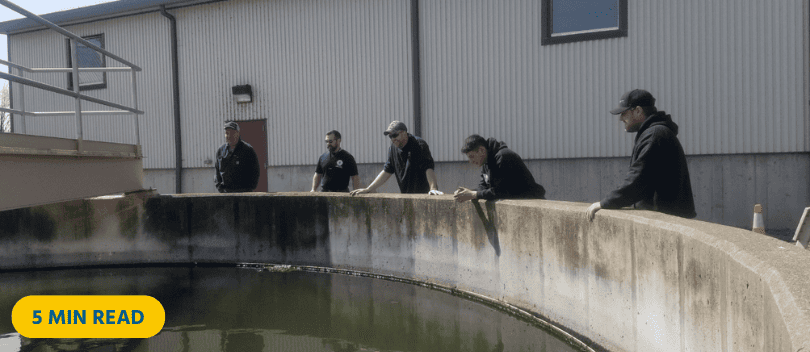
3 City’s Tips to Improving Water Quality & Saving Money
Boot-strapped utilities are looking for every opportunity for cost savings and reinvesting budget into critical infrastructure or helping customers with cost-breaks as inflation hits harder than ever. Budgetary pressure on water utilities continues to grow due to factors such as new infrastructure demands, increasing regulatory compliance requirements, and the scarcity or declining quality of source water.
Some utilities are addressing this challenge by reducing their operating costs through the capture and analysis of operations data, and leveraging this information to make data-driven decisions around optimization, efficiency and time-saving opportunities.
According to a Black & Veatch 2021 Strategic Survey, the core issues facing utilities today include aging infrastructure, system resilience, and managing capital costs. Faced with growing challenges and untapped opportunities, the drive to accelerate innovation in strategy and operations is more critical than ever.
This forces utilities to unlock the hidden value of data within systems and operations by achieving a complete view of their facility to see the relationship between data and discover contextual insights to inform more meaningful improvements.
But even as utilities become increasingly data rich, only 5% of utilities are describing their data management systems as robust and fully integrated. By creating a single source of truth, water and wastewater professionals achieve deeper insights to fuel decision-making and optimize resource allocation across areas like process, maintenance, chemical dosing, and energy.
Better cost-effectiveness intern creates opportunities to invest in new areas, while having confidence in team efficiency, plant maintenance planning, and establishes predictable performance to manage costs and compliance.
Dive into tips that reduce costs, save time & ensure compliance.
Our operations data management solutions empowers operators to unlock more from data by automatically synchronizing multiple sources such as SCADA, LIMS, process, and the field. With no room for error or wasted time manually entering data, software helps automate tasks and ensure compliance so your team can focus on monitoring operations—not entering data behind a desk.
Boulder, CO Leverages Data to Optimize Operations & Reduce Costs
In the city of Boulder, Colorado, process optimization specialists are using an information management system to streamline operations, simplify reporting, and manage significant cost-savings projects. They manage two water treatment facilities, as well as a wastewater treatment facility, creating an IT data-integration challenge for operators to have visibility and access to insights across multiple locations.
Historically, they had limited ability to leverage their data to make process optimization decisions because they could not create charts and reports that illustrated correlations, trends, and comparisons between measurements. Also, their regulatory reporting process took a significant amount of time away from operators that could have been spent making strategic treatment decisions.
Tip 1: Reduce IT burden with purpose-built software for water data management & analysis
To address these concerns, Boulder implemented WIMS, software for water data management and analysis. The result was a central database for optimization specialists and operation supervisors to track and manipulate all data to drive efficiency.
By leveraging commercial-off-the-shelf software, it was fast to implement and meant less burden on their internal IT team. Today operators, managers, and other key personnel have personalized dashboards to see critical insights to drive efficiencies and reduce personal, maintenance, chemical, and energy costs.
Columbia, SC Improves Efficiency, Productivity for Wastewater Plant
Diminishing confidence in existing OPS SQL software accelerated modernization at the City Of Columbia. They realized that integrating siloed data sources into a central database makes management easier, more accessible, and empowers faster decision-making dashboards. The rotating operations teams or management coming on to shift, could get up to speed faster and quickly understand what was happening.
With data silos everywhere, across various spreadsheets Excel and on paper records hidden away in filing cabinets, a more organized and accessible solution was critical. Operators needed to address problems before they worsened, and to do this, insights needed to be centralized for trend analysis and knowing exactly what was happening around shift-change to help get ahead of things and create efficiencies in the process.
They implemented a real-time digital system that seamlessly integrates the collection, aggregation, and tracking of data, while also generating customized reports and presenting information and insights in easy-to-access customizable dashboards. The solution has proven to be highly scalable and affordable, making it a viable option for remote groundwater installations on up to the largest municipalities in the nation.
Particularly valuable has been the ability to clearly show data trends over varying time periods. By getting a holistic view of the data and trends, the team can more easily identify where there might be a challenge or an issue that is emerging that needs to be addressed— specifically by color.
Tip 2: Automate contextual insights like color-coding to speed up decision-making & reduce response time.
KPIs (key performance indicators) are contextualized with color codes for fast understanding and decision-making. For instance, if a reading is within the normal range, it is signified by blue, while yellow provides a warning, and red indicates a problem. For certain parameters, the yellow and red readings automatically generate trigger reports that alert staff of a potential issue. The trend data also serves to keep employees up to speed on what is happening in the plant at any given time.
Beyond improving communication, collaboration, and bolstering employee engagement they’ve discovered more efficient use of chemicals by clearly identifying trends and showing a more holistic view of overall plant operations through various data points that are presented on the dashboards.
City of Salem, OR Conducts Treatment Pilot on Watershed
To pilot an innovative approach to treating wastewater, City of Salem needed to meet compliance requirements and complete ongoing reporting to the Environmental Protection Agency. Their 5 year project would determine whether a constructed wetland approach, a Natural Reclamation System (NRS), could provide a new way of treating wastewater by using natural systems to polish the effluent.
They needed to obtain the necessary data to qualify the use of full-scale wetlands, while at the same time illustrating the benefit of the NRS to both the community and the environment. With all this data and critical importance of meeting regulatory requirements, centralizing data within WIMS made proving the NRS’ value and completing reporting easy.
WIMS was able to capture the necessary wetlands data to allow complete analysis and preparation of required reports (e.g. Water Pollution Control Federation permits). Data collected includes the amount of ammonia entering and exiting the wetlands; the levels of phosphorous, biochemical oxygen demand (BOD), metals, e-coli and annual sediment sampling; as well as many others including monitoring well data. Temperature and ammonia concentrations have been reduced, but the feasibility of a full-scale wetland in Salem remains in question due to the limited availability of the quantity of land required and the fact that Salem has chosen other methods of treatment for the issues that led to the wetlands being chosen in the first place.
Tip 3: Centralize all information into a single data management system to save weeks of time.
With such diverse types of data coming for a multitude of different sources, the CIty of Salem would be wasting time and energy, stressing over reporting without the use of software to provide them with the means to capture, assess, and analyze the information.
The future of cloud-based compliance and operations data management
Establishing your single-source-of-truth for operations and compliance data is critical for water and wastewater professionals to focus on meaningful work— and not waste time entering data and compiling data for reporting. With trust and defensibility in your data, software can take on tedious work and make your team’s daily routines easy, efficient, and more effective.
Maximize the value of data from instruments, SCADA, labs, field, and other data by centralizing it into a single source for faster, better decision making.
Start harnessing the power of your data.
Continue Learning





